Is it right for us?
This diagnostic tool will help you to decide whether social investment is right for your organisation.
If you're new to the world of social investment, start your journey today with our quick and easy 'Is It Right For Us' tool, designed to give you the answers you need in a matter of minutes!
To complete this tool, you'll need to provide some basic information about your organisation, including legal structure, location, annual income, how much finance you need and what you plan to achieve with the finance.


The Outcomes Matrix
The Outcomes Matrix is a practical tool to help social impact organisations plan and measure their social impact.
The tool includes outcomes and measures for nine outcome areas and four lenses for considering the service users of your organisation. You can use this tool to...
- Gain a starting point for planning and measuring your social impact outcomes
- Communicate your impact to social investors and key stakeholders
- Think about future areas of development for your organisation
What is social impact?
Social impact is the effect on people and communities that happens as a result of an action or inaction, an activity, project, programme or policy.
Why measure social impact?
It is important for every organisation to measure their social impact so they can tell the story of the change they make - their supporters, stakeholders and funders' will want to know this.
It is also important to measure impact for social investment. As social investment is repayable finance, and investors consider both social and financial return, they will want to see both evidence of your social impact as well as your ability to repay.
How does the Outcomes Matrix work?
What does it do?
The Outcomes Matrix will take you on a journey as you follow the steps from start to finish. You can select the outcomes and indicators that are relevant to your organisation and add additional detail when you wish.
At the end of the tool, you will be able to download your answers in Excel format.
Step 1: The area you work in - what impact do you contribute to?
There are 9 outcome areas the tool explores. You can browse and select the relevant outcome areas for your organisation in order to build your own unique Outcomes Matrix.
- Arts, Heritage, Sports and Faith
- Citizenship and Community
- Conservation of the natural environment
- Employment, education and training
- Family, friends and relationships
- Housing and local facilities
- Income and financial inclusion
- Mental health and wellbeing
- Physical health
Step 2: Choose your outcomes and indicators
Once you have selected your outcome areas, you can add specific outcomes and indicators. This allows you to future customise and capture the impact your organisation is making.
Step 3: Who will this impact?
When considering service users, we suggest you consider four lenses:
- People at high risk of harm, disadvantage and discrimination
- Protected characteristics
- Socieonomic groups; and
- Geography.
This approach is intersectional and enables you to think about and capture how different people (or service users) may experience a combination of multiple forms of discrimination or disadvantage. This also allows you to explore how this may affect their ability to access your product or service and achieve the intended outcomes.
Steps 4 and 5: Review, edit and download
Once you have added information on your service or product users, you can move on to the final two steps that allow you to review and edit the information you have added.
If you want to add or change information, you can move back and forth between the steps. Finally, you can download your responses as an Excel file.
Measuring your social impact
Introduction
The important thing is to measure social impact in a way that’s proportionate for your organisation’s activities and resources.
A simple framework is Plan, Do, Assess, Review, originally developed by Inspiring Impact...
Plan
Planning how to create the desired change through tools and resources including the Outcomes Matrix and Theory of Change.
Do
Measuring performance through various methods of data collection against key goals and objectives
Assess
Evaluating the data you have collected and making sense of it
Review
Communicating results and using these steps to make data-driven changes to improve your work
Other tools and resources
Case studies
Find out how organisations across the UK are using social investment.
Browse and read over 100 case studies of organisations that have taken social investment and learn about their impact. Browse the full collection of case studies.
Videos
Find our about investors, investees and their social impact with our behind the scenes videos.
You can watch the stories of organisations that have taken social investment on our YouTube channel.
Podcasts
Hear from your peers about the 'warts and all' journey of social investment. Check out our latest podcasts.
The Outcomes Matrix
An interactive tool on Good Finance that provides a useful starting point for you to consider the social impact that you are trying to deliver and how you will measure it.
How much does it cost?
The cost of capital is the cost associated with taking on a new investment.
Capital usually refers to financial capital or money, in particular, the amount of cash and assets held by an organisation. The cost of capital is the cost associated with taking on a new investment. In this case, when charities and social enterprises take on repayable finance (social investment).
What is the cost of capital?
What is the cost of capital?
When an organisation receives social investment, they will usually need to pay a return for using the money an investor lends them.
Any social investor making loans expects to lend, and then be repaid. The aim is to cover the cost of lending and any default payments which means the money can be recycled and lent again.
How much does social investment cost?
Different investors will have different appetites for loss and return, and this will determine how much capital is available and what it will cost.
The cost of capital is often simplified to the interest rate that you will be charged.
To understand more about the cost of capital in social investment and what key factors you need to consider, watch this video explanation.
The Cost of Capital Calculator
How it works
This cost of capital calculator provides an estimate of how much social investment could cost for your organisation, and what the monthly repayments might be.
The purpose of this page is to provide an example of how the cost of capital in social investment may work. Various additional factors, such as the providers of the capital, specific details, rates and fees will affect monthly repayment rates.
You will also need to consider:
- What type of social investment you are considering e.g. a secured loan, revenue participation loan or charity bond ‘the product’ (find out more about the different types and which ones might be right for you here)
- How long they are going to lend their money for ‘the term’.
- How likely they are to get their money back ‘the risk’
- How much does it cost them to make the deal happen ‘the fees’
Example 1
A charity borrows £100,000 in the form of a secured loan from a social bank to buy new premises from which to operate.
This is a secured loan meaning that a charge against the asset (in this case property) is made. In the event that the loan is not repaid the asset could be used to repay the loan.
Capital amount: £100,000
Term: 10 years
Interest: 3%
Fees: £0 (payable in one lump sum upfront so does not contribute to the cost of capital)
Monthly repayment: £965.61
Example 2
A social enterprise borrows £45,000 as working capital to help cashflow a new contract they are delivering for their local authority.
This is an unsecured loan and they will only receive payment from the local authority if they deliver the outcomes agreed in the contract. They will use the money from the investment to recruit additional staff to deliver the contract and to cover the cost of their wages.
Capital amount: £45,000
Term: 3 years
Interest: 7%
Fees: £675 (1.5%)
Monthly repayment: £1389.47
Additional support and tools
Key Fund - Financial Planning Tools
Key Fund's Loan Repayment Calculator makes basic assumptions on the information you provide to give an estimate on how much monthly repayments are likely to cost. You can also see how much this equates to on an annual basis. This sheet is for information purposes only and does not constitute an offer of facilities.
This fantastic loan and APR calculator provides estimations for your monthly loan repayments, including fees and APR. The calculation is available for various lengths of term and will provide a detailed breakdown of the likely costs to your organisation upon taking social investment.
The financial workbook is designed to help create a three year cash flow forecast, profit and loss statement as well as a balance sheet to help assist with applications for finance. It is free to use and share.
The Key Fund business plan format has been designed to reflect the information required when applying for a loan and has involved input from a range of social investors, intermediaries and social enterprises. The intention is to help investees move through the process more smoothly and reduce the workload created in the application process by ensuring that your business plan contains the majority of information required for a loan application.
Calculating the Cost of a Loan
In this blog, Natalia Fernandez, Regional Manager at Big Issue Invest, explores the considerations needed to accurately calculate the cost of a loan.
What do Social Investors need from Social Enterprises?
This animation supported by Connect Fund demonstrates what information social investors need from social enterprises and why. Click here to watch now.
How Social Investment Really Works
Seb Elsworth explores the many misunderstandings amongst charities and social enterprises surrounding what social investment actually is and debunks a few of the myths that need busting. Read the blog.
What Social Enterprises Tell us They Want From Social Investors: Cheaper Money
Better Society Capital’s Head of Social Sector Engagement, Melanie Mills, gives some background into issues around the cost of capital. Read the blog.
How Much Does Social Investment Cost?
A Good Finance blog explores how much social investment actually costs to social enterprises and charities. Click the button below to read the blog.
Find out how much your loan could cost
Includes capital repayment, interest and fees
This website and calculator are designed as an educational tool only, and is not intended to constitute investment, legal, tax or other professional advice.
Nothing on this page or on this website should be construed as a solicitation or offer, or recommendation to acquire or dispose of any investment or to engage in any other transaction, or to provide or obtain any investment advice or service.
No guarantee, representation or warranty of any kind is given as to the accuracy, timeliness or completeness of the information and we do not accept any responsibility for any errors or omissions in this information or any of the information on the websites of such service providers.

Social investment for energy resilience
Towards the end of 2022, we asked our users some questions about energy resilience. More than 80% expressed interest in exploring measures to reduce organisational energy bills.
We want to ensure we provide as much support as possible to those that might want to use social investment to fund such measures.
Charities, Social Enterprises, and Community Organisations are tackling some of the most complex issues in the UK. Amidst a landscape of crippling increases to energy bills and ever-decreasing financial support for social sector organisations, we wanted to provide more information on how organisations can support and develop their energy resilience with social investment.
Pre Investment Support
Here at Good Finance, one of our key goals is to improve knowledge on social investment, what it is, what it can be used for and the journey and process it requires.
This Hub takes a step back to focus on the 'pre-investment' stage, supporting social enterprises and charities by signposting to tools, resources and organisations that can help them to achieve their next steps, even in the face of adversity.
From business planning to diversity, equity and inclusion and everything in between - check out the Pre-Investment support hub.

Additionality
As a concept, additionality is about understanding the extent to which something happens as a result of an intervention, and what would have happened without that intervention. It enables us to understand how adding something new or different has resulted in a particular impact or created additionality.
Amortization
Is a type of finance where the repayments of a loan are spread over a set period of time effectively reducing the amount borrowed until it is repaid.
Angel investors
High net worth individual who make investments, typically in early-stage enterprises. See product types for more information.
Asset
In relation to an organisation's accounts. A financial benefit recorded on a balance sheet. Assets include tangible property (i.e. a property with a physical form such as buildings, equipment and vehicles) and intangible property, and any claims for money owed by others. Assets can include cash, inventories, and property rights.
Asset Lock
A rule which prevents the residual assets of the society being distributed to members. If a society has an asset lock, its rules will usually specify what must happen to these residual assets; normally they are transferred to another asset-locked body with similar aims and objectives to the society that is being wound up.
Asset of Community Value
is a building or piece of land that has been identified as valuable and is used for a positive social purpose to benefit the local community, These include village shops, pubs, community centres etc.
Asset transfer
Where a charity or social enterprise takes ownership of a building previously owned by part of the public sector; the building is usually one that is particularly valued by the local community.
Balance sheet
A "snapshot" of the assets and liabilities of an organisation at a single point in time.
Base rate
This is sometimes called the ‘Bank of England base rate’ or ‘Bank Rate’. It sets the level of interest all other banks charge borrowers and its purpose is to help regulate inflation. Some social investors set their interest rates relative to this rate of interest e.g. base rate + 2%. It is important to understand how the cost of interest will be calculated on any money you are looking to borrow.
Blended finance (products)
is mix of investment - part repayable finance and part grant. Specialist social investors and grant makers may offer this, but you can also source blended capital yourself by applying for both grants and loans.
Blended finance (structures)
This occurs at a fund level where concessionary capital like grant, guarantees or tax reliefs is blended or mixed with the non-concessional capital which is then used to provide repayable finance for social enterprises and charities.
Bond
a promise by a borrower (the issuer) to repay money to an investor (the bondholder) usually with interest (the coupon). The issuer borrows money by selling bonds to bondholders; the issuer receives the money and the bondholder receives a promise from the issuer to repay the debt at a later date, with interest (usually through a written contract).
Bounce back loan
Is a new scheme introduced to help smaller businesses impacted by COVID-19 access repayable finance. Social enterprises and charities can apply online to borrow £2,000 - £50,000. Because of the government guarantee, the loan is interest free for the first 12 months and then subsequently carries a 2.5% interest rate.
Capital
Capital usually refers to financial capital or money and in particular the amount of cash and other assets held by an organisation.
Capital repayment holiday
A period of time, usually at the start of a loan, where the lender agrees to receive only interest payments, so the borrower won’t pay back any of the original capital lent during this period. This is usually used to allow new trading activities time to generate revenue before the full cost of borrowing kicks in, or to help improve cash flow during tough periods of trading.
Capital Risk
is the risk where an investor might lose money from an investment and where as a result, the organisation is unable to either make the repayment of the loan or is unable to recognize the returns the investor expected to receive.
Capstone investor
the final investor in a fund or a project whose investment secures the other investments and enables the fund or project go ahead
Carbon Neutral
Being ‘Carbon Neutral’ means taking active steps to remove the same amount of CO2 to what’s emitted through trading activities and supply chains, by investing in measures that absorb CO2. These measures are often referred to as ‘Carbon Sinks’ and examples include forests and oceans.
Cash flow
the actual cash held by an organisation over a given period. A cash flow forecast shows the total expected outflows (payments) and inflows (receipts) over the year, usually on a monthly or quarterly basis. It is an essential tool for understanding where there will be shortages and surpluses of funds during the year and planning for ways to resolve these.
Catalytic capital
Is investment capital that is patient, risk-tolerant, concessionary, and flexible and is an approach used to support impact-driven enterprises that lack access to capital on suitable terms and to unlock impact and additional investment that would not otherwise be possible.
Climate Justice
This term recognises that although global warming is a crisis affecting us all, the effects are not felt evenly around the world, resulting in inequitable outcomes for some communities. The concept refers to this ethical challenge and how we can continue to protect the planet in a way that creates a fairer more just and equal world in the process.
Co-investment
investment in a project or fund alongside and often on the same terms as other investors.
Community development finance institution (CDFI)
a private financial institution that provides affordable loans and support to businesses, social enterprises and individuals who struggle to get finance from high street banks and loan companies.
Community Interest Company (CIC)
A Community Interest Company (CIC) is a type of limited company whose profits are reinvested in the mission of the organisation to benefit the community, instead of private shareholders. There are different types of CICs; they can be limited by guarantee or limited by shares.
A CIC limited by guarantee is a company which has no share capital and cannot pay dividends.
A CIC limited by shares has capital that is divided into shares for individuals to invest in.
Community Shares
refers to withdrawable share capital; a form of share capital unique to co-operative, community and charitable benefit societies. Investors are able to take their money out (subject to any conditions) but the shares are not transferable to another person.
Community Shares Standard Mark
is a mark of recognition that is awarded to community share offers that meet a national standard of good practice. This national standard is built using an assessment framework that was created to ensure that community share offers are clear, honest and transparent.
Contract
A contract is an agreement that specifies certain legally enforceable rights that obligations to two or more parties. A contract typically involves the transfer or delivery of good, services or, money.
Convertible Loan
is a short term debt, that will either be repaid or converted into equity at a later date.
Cornerstone Investment
the principal investor in a fund or project whose commitment to invest may give confidence to others to invest.
Cost of Capital
The rate of return that is required to return an investment factoring in risk, costs associated with structuring a deal and the time money is to be lent over.
Covenant
the terms of a grant that describe the circumstances in which you’d need to repay the money.
Crowdfunding
is a way of raising finance (donations/grant, equity or debt) from a 'crowd' of people - typically using an online platform. Equity or debt raised using crowdfunding is repayable on an agreed basis with the individual investors, usually with interest on top.
Debt Capacity
is a measure of an organisations capacity to take on debt, and the amount of debt an organisation is able to borrow.
Debt Finance
investment with the expectation of repayment (usually with interest). Debt finance usually takes the form of loans, both secured and unsecured, as well as overdrafts and standby facilities or standby facilities (e.g. bonds or loan notes). Generally, debt financing requires a borrower to repay the amount borrowed along with some form of interest, and sometimes an arrangement or other fee.
Debt Service Coverage (DSC)
is a term that is used to decide if your business can pay back its debts on time. It considers how much your loan and repayments would cost you in comparison to the income you generate, and determines your ability to repay debt.
Development capital
money (typically invested as equity) to enable organisations to build capacity, for example by purchasing property or other assets, or developing new products and services.
Discrimination
The unjust or prejudicial treatment of different categories of people, especially on the grounds of race, age, sex, or disability.
Dividends
a sum of money paid regularly (typically annually) by a company to its shareholders out of its profits (or reserves).
Dormant Assets
The Dormant Assets Scheme unlocks money from forgotten bank and building society accounts, if these lost funds cannot be returned to their owners money can be transferred to the Dormant Assets Scheme to be distributed to defined recipients who fund social and environmental initiatives
Due Diligence
is the process an investor undertakes when considering an organisation for investment. This process varies from investor to investor, but will generally include an in depth review of your organisation, including governance, financial information, business model, revenue, projections, organisational management etc. This process gives the investor an opportunity to become better informed on where their money is being invested, and determine if the investment is the right fit for them.
Energy Resilience
The term ‘Resilience’ refers to the ability to withstand or recover quickly from difficulties. In the context of energy and social enterprises and charities, we refer to ‘Energy Resilience’ as having the knowledge, tools and assets required to be sustainable through the ongoing energy bills crisis.
Energy Security
This describes access to reliable and affordable sources of energy. For many social enterprises and charities, various global contexts have caused difficulties for energy supply, pushing up prices and making it difficult for organisations to continue to operate sustainably. In addition, many beneficiaries of social enterprises and charities are deemed to be in fuel poverty, meaning the demand for services is ever-increasing.
Environmental, Social & Governance
Non-financial performance indicators focusing on ethical, sustainable and corporate governance, ensuring systems are in place to give accountability on important working practices and global issues. For example in areas such as: net zero aspirations, managing the organisation’s carbon footprint, gender and ethnicity pay, living wage and social mobility.
Equal Access
Equality means each individual group of people is given the same resources and opportunities.
Equitable Access
The equitable solution allocates resources that each person or group needs, leading to positive outcomes for all groups (not be confused with equity, which is a type of investment in exchange for a stake in an organisation).
Equity investment
investment in exchange for a stake in an organisation, usually in the form of shares. Each share represents ownership of a proportion of the value of the company and typically provides the shareholder with voting and dividend rights. Equity finance is permanently invested in the organisation which has no legal obligation to repay the amount invested or to pay interest. Equity investors expect to receive dividends paid out of the organisation’s earnings available for distribution and/or capital gain on the sale of the organisation or on selling their shares to other investors. See product types for more information.
Equity like
is essentially a type of debt structured to act like equity where the organisation's governance is not structured to be able to issue shares.
Facility
an arrangement whereby a lender provides monies to a borrower. "Facility" is often used interchangeably with the term "loan".
Fees
This may also be known as an arrangement fee. It is the cost charged by an investor to structure a deal and will cover staff time, overheads etc covering their professional services to the investee.
Financial Abuse
Financial abuse often involves or is associated with: someone taking or misusing someone else’s money or belongings for their own gain; harming, deriving or disadvantaging the victim; controlling someone's purchases or access to money; often associated with other forms of abuse; doesn’t always involve a crime life theft or fraud.
Financial returns
the monetary surplus generated by an organisation on an investment. It may be expressed as "not" (i.e. after deducting all expenses from the gross income generated by the investment) or "gross".
First loss
it is possible to have different tiers of investors so that one set of investors accepts that, in the event that the investee suffers financial difficulties, it will lose the money it invested before any of the other investors lose any money. This investor will bear the ‘first loss’.
Flexible Finance
Investment that is structured with a repayment schedule that’s tailored to your organisation’s specific needs. The conditions of the investment will work alongside your business plan to allow income to develop alongside the need for repayment. This could include a range of options including but not limited to:
- An initial capital and interest repayment holiday period (in order to get trading off the ground)
- An interest only period (this keeps repayments low)
- A sliding scale of interest (this might be related to profitability or return)
- Investment could be made in the form of a loan or equity (although this will depend on your organisation's legal structure)
Fund
a collective investment scheme that provides a way of investing money alongside other investors with similar objectives on a pooled basis. This often provides individual investors with access to a wider range of investments than they would be able to access alone and may reduce the costs of investing due to economies of scale. Funds are managed by fund managers for a management fee on behalf of investors.
Gender Lens Investing
Plays an important role in the investment process to improve equality and access to investment for social purpose organisations. this means investing in Women led/owned organisations, ensuring a fair workplace and taking a stance on gender equity.
Grant
a conditional or unconditional gift of money with no expectation of repayment. See product types.
Green Economy
A Green Economy is an economic model. It’s usually described as low-carbon, resource-efficient and socially inclusive, whereby growth is determined by public and private investment into ‘green’ infrastructure, reducing our emissions and building our capacity to adapt to climate change.
Greenwashing
Greenwashing describes the process of disseminating false or misleading information about how a company’s products are deemed environmentally sound. In the context of investment and social investment, this particularly refers to un-substantiated claims about the sustainability characteristics of an investment product.
Guarantee
is an agreement between an investor and the guarantor of an organisation wanting to take on social investment if the debt cannot be repaid by the investee, the guarantor will step in to cover the costs.
High net worth individual
a person who:
a) has an annual income of £100,000 or more;
b) net assets of £250,000 or more.
Human Rights
Human rights are universal and inalienable rights and freedoms that belong to everyone. Based on the principles of fairness, equality and respect, they reflect the conditions that all people need to both flourish as human beings and participate as members of society.
Husna
Godly loan. Borrow and return the same amount of money.
Impact
Impact refers to creating change, which can be positive or negative and either intended or unintended. For charities or social enterprises, it’s about understanding how to effectively help their target community through planning the desired outcomes of their services, doing by collecting the right information to know if they’re achieving their goals, assessing what impact they’re having and learning from the results to improve their work.
Individual Discrimination
Concerns individual prejudicial or unfair behaviour to others based on their status or characteristics.
Inequality
This refers to unfair differences in the extent to which different people and groups are able to realise their human rights and freedoms.
Institutional Discrimination
Concerned with discrimination that has been incorporated into the structures, processes and procedures of particular organisations or institutions, either because of prejudice or because of a failure to take into account the particular needs of different social identities.
Institutional investors
organisations making investments e.g. pension funds or insurance companies.
Interest
fee paid by a borrower to a lender to pay for the use of borrowed money. When money is borrowed, interest is typically paid to the lender as a percentage of the amount owed. Interest usually accrues on a daily basis but is charged less frequently, e.g. monthly, quarterly or annually.
Investment Committee
An investment committee is a group of people that ensure an organisation is delivering on its investment strategy and goals. Investment Committees are made up of a range of skills, knowledge, backgrounds and experiences. They ultimately support an organisation to make investment decisions.
Investment readiness
an organisation having the systems, processes and business model to be able to attract investment
Investment Vehicle
An investment vehicle is a tool that helps investors choose the best investment to gain the best positive, financial returns. They can be low risk such as bonds, or high risk such as stocks.
Junior Debt
Also known as subordinated debt, this is because this type of finance has a lower priority of repayment below that of other investors. It is therefore potentially riskier for investors. It is therefore potentially riskier for investors and as a result usually carries higher rates of interest.
Just Transition
This term refers to an equitable and sustainable shift from a carbon-intensive economy to one that is environmentally friendly, inclusive, and fair in terms of the planet. This transition is essential to lessen the impacts of climate change and address social inequalities while encouraging sustainable economic development.
Liability
in relation to an organisation's accounts, a financial obligation or debt to another party entered on a balance sheet.
Liquidity
refers to the availability of cash that an organisation has to meet short-term operating needs. It is the amount of liquid assets that are available to pay expenses and debts as they become due.
Loan
a sum of money which is borrowed and has to be paid back, usually with interest. See product types for more information.
Loan capital
is capital that is raised through borrowing on fixed terms to help organisations deliver and grow.
Marginalised
Marginalised populations are groups and communities that experience discrimination and exclusion (social, political and economic) because of unequal power relationships across economic, political, social and cultural dimensions.
Market
public place where buyers and sellers make transactions, directly or via intermediaries.
Merger
combining two companies to create one larger company that is expected to be more valuable than the individual companies on their own.
Mezzanine Finance
is a type of debt that includes investment, it can be used for a range of reasons. The cost of this finance can carry higher interest rates and can also involve equity characteristics.
Mudharabah
Widely known as a profit-sharing contract where one party provides funds to another party that provides management expertise in return. The profits are then shared between two parties.
Mudharabah Contract
Is a profit-sharing contract. Under a Mudarabah contract, the provider of capital agrees to share the profits between themselves and the entrepreneur at an agreed ratio or percentage.
Mudharabah Deal
A form of asset finance or an equivalent to a hire purchase agreement. where a fee is constructed as part of a mark-up within the deal and the capital used to buy assets. interest is not used or calculated.
Mutual Bank
A mutual bank is a cooperative financial institution owned by its depositors or customers. They include mutual organisation, mutual savings banks and cooperative banking. Unlike traditional banks, which prioritise shareholder profits, mutual banks focus on serving their members’ interests. they reinvest profits back into the institution to benefit customers, offer a rang of banking services and often have a community-oriented approach.
Net Present Value (NPV)
present value of expected future cash in flows minus the present value of cash outflows e.g. the amount of investment and any initial and ongoing investment costs. Often used in capital budgeting to determine whether or not to make an investment (if negative, the investment should not be made).
Net Zero
Net Zero refers to the state in which the amount of greenhouse gas that’s produced is balanced by the amount that’s removed from the atmosphere. It’s achieved through various reduction and removal efforts.
Nominal rate of return
rate of return expressed only in monetary terms - so not adjusted for inflation.
Ordinary share
share in the ownership of a company that gives the holder the right to receive distributed profits and to vote at general meetings of the company. An ordinary shareholder ranks behind all other creditors/investors if the company is wound up.
Overdraft
an amount agreed between a borrower and a lender (typically the bank of the borrower) up to which an organisation can borrow when it needs funds rather than in one lump sum. Overdrafts are repayable on demand by the lender. Interest is usually paid on the amount of money that is borrowed until it is repaid and rates are usually higher than for standard loans. See product types for more information.
Patient capital
loans or equity investments offered on a long-term basis (typically 5 years or longer). It is often used to describe long-term investment by investors looking for non-financial as well as financial gains and may be offered on soft terms (e.g. capital/interest repayment holidays and at zero or sub-market interest rates).
Payment by results
Payment by results refers to a programme where payments are made after the achievement of pre-agreed results, rather than being made up front to fund future activities. These can sometimes take for of Social Outcomes Contract.
Peer-to-peer lenders
investors investing directly into borrowers (rather than in a financial institution) typically using online platforms that match (usually individual) lenders with borrowers to create crowdfunded loans for both business and individuals. See product types for more information.
Philanthropic capital
Capital offered for investment which focuses more on the impact that an organisation is delivering on instead of the potential return of investment. As a result this type of capital is usually able to tolerate making higher risk investments.
Principal
a sum of money lent or invested, on which interest is paid or earned (or the balance of a loan, net of interest and amounts repaid).
Product
Social investment products range from well-known mechanisms, such as overdrafts and mortgages, to more unfamiliar forms such as quasi-equity and patient capital. There are two main types of social investment - Borrowing (debt) or Shares (equity). Click here for more information on the full range of products.
Profit and loss account
also known as an income and expenditure account, it shows income earned for the year and deducts from it all expenses incurred in earning that income. This will show a profit (surplus) or loss (deficit) for the year, depending on whether income is larger than expenses or expenses have exceeded income.
Qualitative Data
Qualitative data is non-numerical information and generally tends to be about people’s experiences, perspectives, or opinions. It can be collected through interviews, open ended survey questions, quotes or testiomonials. Qualitative data is an importance way of understanding the impact of a programme or activity on someone’s quality of life.
Quality Jobs
Opportunities for work that is productive and delivers a fair income, security in the workplace and social protection for families, better prospects for personal development and social integration, freedom for people to express their concerns, organise and participate in the decisions that affect their lives and equality of opportunity and treatment for all women and men’
Quantitative Data
Quantitative data is any type of data that can be represented by numbers. This type of data tends to be-numbers based, countable or measurable; mostly important it is quantifiable.
Quasi-equity
is an investment product that aims to fill the gap between debt & equity - a patient repayment process based on trading performance.
Reducing Inequality
is defined as lessening unfair differences in the status, treatment and outcomes of different people and groups in one or more aspects of their lives (e.g. economic, social, cultural, political and/or environmental).
Repayable finance
money that has been provided to you to use which you’ll need to return on certain terms at some time in the future.
Responsible Business Principles
Are a framework of the core values and behaviours that make up an organisation and include everything from how employees are treated to how investment decisions are made including the impacts of any decisions on ESG: Environment, Social & Governance.
Restricted funds
funds (often grants) that can only be used for a specific purpose or project and cannot be used for other purposes. These can also be referred to as ring-fenced or earmarked funds.
Retail investor
Otherwise known as an individual or ordinary non-professional investor who buys and sells investments.
Revenue participation note
is an agreement by an investor to provide capital to an enterprise up front, in return for an agreed portion of future revenue and/or profit.
Riba
The Islamic term for interest which is prohibited in Islamic/ Shariah compliant financing.
Riba al-fadl
The concept of Riba al-fadl refers to exchange or sale transactions in trade which effectively result in the charging of ‘interest’ through the exchange of the same commodity, but of a different quality or quantity.
Riba al-nasiah
Interest-based lending that results from the exchange not being immediate. A practice similar to conventional lending today where the borrower pays the lender more than the original amount lent to reflect the delay in repayment.
Risk
This factors in the likelihood of the investment being paid back. For example borrowing money to buy an asset such as a building which is considered to be lower risk than lending money to a start up organisation with no proven track record.
Risk Appetite
is the level of risk an organisation is prepared to face in order to meet their objectives. It is a framework to ensure organisations are making informed decisions including the appetite to take on investment and associated risks.
Secured (debt) loan
a loan that is backed by property (in the case of a mortgage) or assets belonging to the borrower. This may be the property or asset that is being bought with the loan itself or other assets held by the organisation. If an organisation defaults on its debt, the lender can sell the asset to recoup, in full or in part, its loan. See product types for more information.
Senior debt (loan)
debt that takes priority over other unsecured or otherwise more junior (or subordinated) debt. In the event that the borrower organisation is wound up, senior debt theoretically must be repaid before other creditors receive any payment.
Shariah Compliant Investment
is a type of investment that must follow Islamic Law. It is known as socially responsible investing due to the specific requirement in order to access the fund that complies with Islamic principles. As charging interest is prohibited, Islamic banks agree to a certain amount of profit or loss from the business.
Social enterprise
a business with primarily social objectives whose surpluses are principally reinvested for that purpose in the business or in the community, rather than being driven by the need to maximise profit for shareholders and owners. #SocEnt
Social impact
there is no one definition of the term or concept, but the social impact can be defined as the effect on people that happens as a result of an action or inaction, activity, project, programme or policy. The 'impact' can be positive or negative and can be intended or unintended, or a combination of all of these.
Social Impact Bond (SIB)
a payment-by-results contract where social investors pay for an organisation to deliver a service - for example, helping homeless people to find a home - and the commissioner (typically government or local authority) repays the investors with interest if the service is successful unlike a conventional bond, they do not offer a fixed rate of return. See product types for more information.
Social investment finance intermediary (SIFI)
an organisation that provides, facilitates or structures financial investments for social sector organisations and/or provides investment-focused business support to social sector organisations.
Social Investment Tax Relief (SITR)
offsets the risk to investors by offering a 30% tax relief on qualifying investments. It can be used by eligible social enterprises, charities and community businesses to raise patient, flexible and more affordable capital to support their trading activities.
Social investment wholesaler
an investor which makes larger investments in funds or financial organisations (social investment finance intermediaries) that will themselves invest smaller amounts in a number of charities and social enterprises. Big Society Capital is the UK social investment wholesaler.
Social sector organisations (Third Sector)
charities and social enterprises that exist primarily to deliver social impact; that reinvests the majority of surpluses to further their social mission; and that are independent of government. The social sector includes, but is not limited to voluntary and community organisations, charities, social enterprises, community interest companies and community benefit societies. The social sector is also referred to as the "Third Sector".
Sophisticated Investor
A sophisticated investor is a name given to a type of individual who has sufficient capital and financial knowledge to engage in more advanced types of investment opportunities.
Standby or revolving credit facility
usually provided in the form of a loan where money can be drawn down over a certain period of time when an organisation needs it (if budgeted income does not materialise), rather than as one lump sum. Interest is charged only on the funds drawn down. This is similar to an overdraft but is typically repayable on a fixed date (rather than on-demand).
Statutory Asset Lock
An asset lock which is baked by legislation (statute); once in place it cannot be removed even with the consent of members. It is possible to include an asset lock rule in any type of society, although only a statutory asset lock in a ‘community benefit society’ is absolutely watertight. Charities and ‘community interest companies’ also have statutory asset locks
Stress test
Sometimes referred to as pressure, in the social investment process these terms might be used to describe testing a financial model to determine how a business might react under pressure or a worst-case scenario. So, what would happen to your profit and loss or cash flow numbers, or the financial model for your organisation in under less-than-ideal circumstances?
Structural or Systemic Discrimination
Refers to macro-level or overarching rules, norms, routines, patterns of attitudes and behaviour in institutions and other societal structures that represent obstacles to groups or individuals in achieving the same rights and opportunities that are available to the majority of the population.
Subordinated or junior debt/loan
debt which is ranked after other more senior debt. In the event that the borrower organisation is wound up, subordinated debt will be paid only after other senior creditors have received payment. This is a riskier investment for a lender and is therefore typically lent at a higher interest rate than senior debt.
Sukuk
Is a certificate of investment that represents a portion of ownership, in a portfolio of eligible existing or future assets. These are also commonly referred to as "sharia compliant" bonds.
Taxonomy
Taxonomy is essentially another word for categorization that also has key principles which then explain each subset of the categories. In the social investment world, it can be used to categorise the reasons why organisations want to take on investment as it's extremely beneficial to fund managers and other stakeholders to be able to see trends, themes and potential opportunities. Keeping it clear and comprehensive is key to creating a successful taxonomy, so that users and readers can clearly understand how to use it and why it is useful.
Term
This relates to the length of time that an investment is made over and when and how it is due to be repaid.
Term loan
a loan drawn as a lump sum or in several portions, for a set period of time with an agreed schedule of repayment. Once any part of the loan is repaid, it cannot be re-borrowed.
Theory of Change
A process for thinking about an organisation or project’s ‘story’ a theory of change is a great way to clearly articulate the social impact you want to deliver. It encourages developing a clear plan for how to help to address a social need in your community and how change happens in the short, medium and long term. Theory of change is often associated with some sort of visual map but could also be set out as a set of tables or charts.
Triple bottom line
approach to measuring a company’s performance on environmental, social and economic issues. The triple bottom line focuses companies not just on the economic value they add but also on the environmental and social value they add or destroy.
Ujarh
Fee paid to an agent or third party for their services within the creation of a financial investment arrangement.
Underwriting
a commitment, for a fee, by a lender or investor to provide financing if other sources fail.
Unrestricted funds
funds that can be used however and wherever an organisation needs to further its objectives.
Unsecured loan
a loan that does not take security over an organisation’s assets. Because the risk for the lender is greater, interest rates are usually higher than for secured loans.
Valuation
process of determining the value of an asset or a portfolio of assets, including any accrued income.
Venture capitalist
a professional investor who provides capital to early stage businesses.
Voluntary Carers
A person, usually a relative, parent, spouse, partner, child, or friend, who provides regular and substantial voluntary care, often in lieu of a paid care worker, to someone who is disabled, severely ill, frail or has a mental health problem.
Vulnerable
People or groups of people that experience higher risk of harm, abuse, disadvantage, and discrimination
Wakalah
Is a contract between an agent and principal. This contract enables the agent to render services and be paid a fee (Ujrah). This type of agreement enables the pooling of investors into a yield sharing structure.
Wakalah agreement
An agency-type agreement which enables the pooling off investors into a yield sharing structure.
Waqaf
Commonly known as endowment. This usually involves donating a fixed asset, such as a building or a plot of land, that can produce a financial return or provide benefit to the community.
Working capital
Finance used to manage the timing differences between spending money and receiving it (income and expenditure).
Write-off
when all or part of the value of an asset (e.g. an investment) as shown in an organisation's accounts is reduced. In respect of an investment, this may occur when the investor considers there is no likelihood of any recovery of the amount invested.
Zakat
Zakat is a financial obligation (if you meet the requirements) to donate a certain proportion of wealth to charity. Zakat is payable on all accumulated wealth held for the period of 12 lunar months. Zakat is the third pillar of Islam and seen as an act of worship.











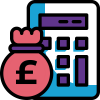


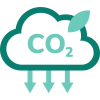





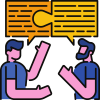






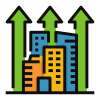

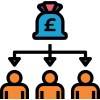
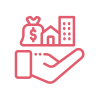
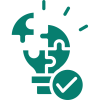
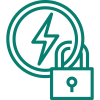
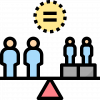
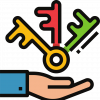









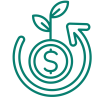
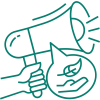

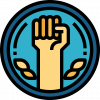


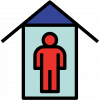
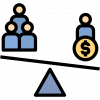
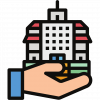




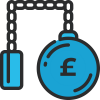
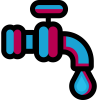


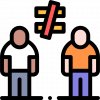

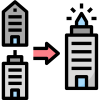




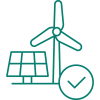




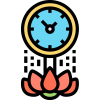

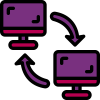










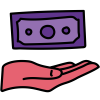


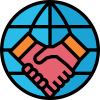



















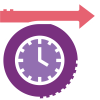
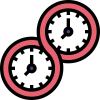


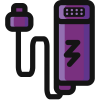


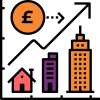


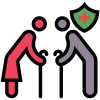




Measuring social impact